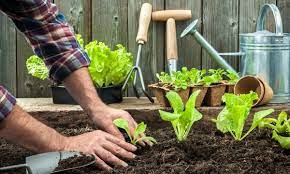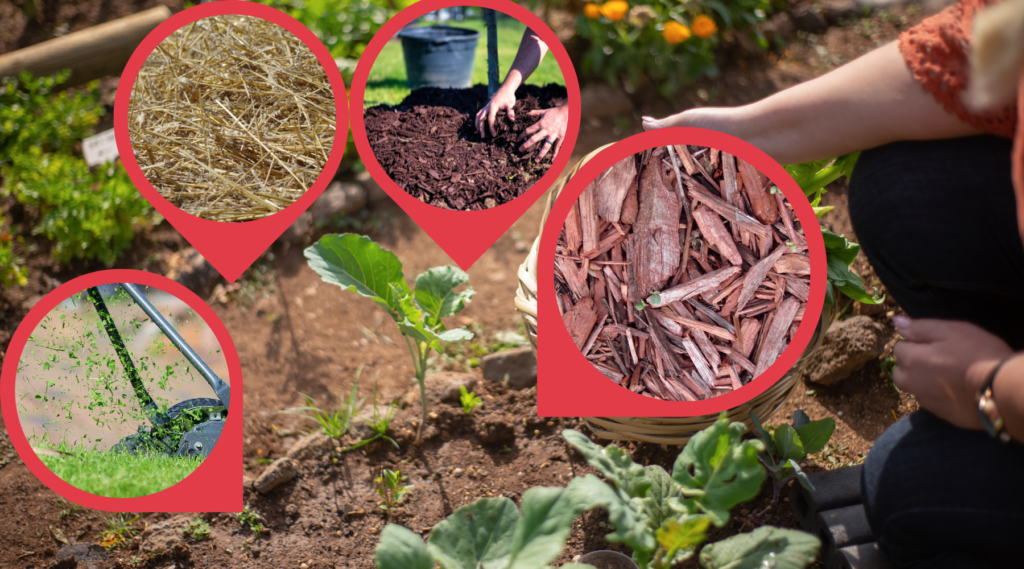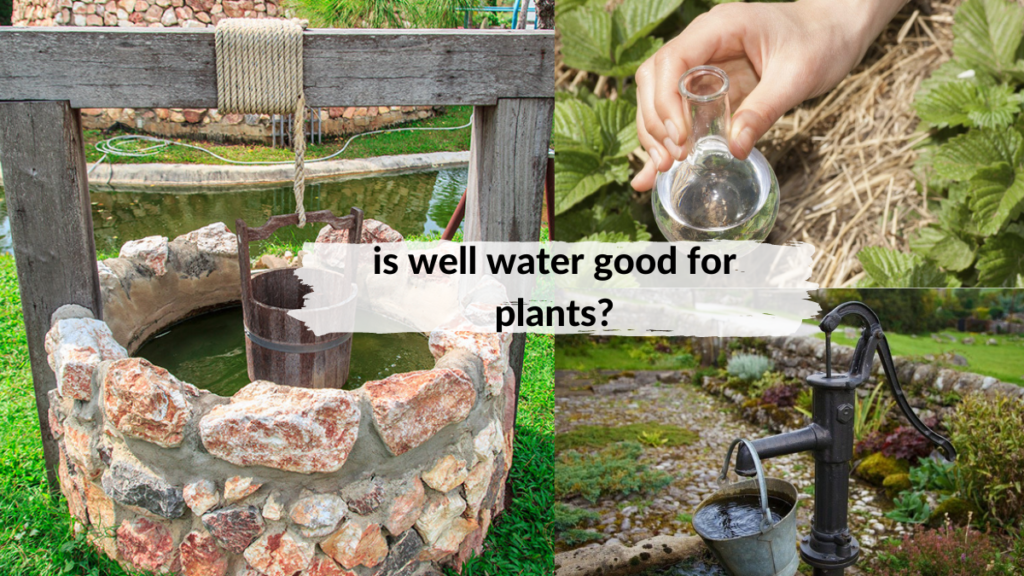Many are confused with getting the most out of their compost. Yes, many know that it is good for your garden. But not everyone knows how they can use it properly that will benefit all plants in the garden and the right time to use it. This is where we can help you. We created a good-to know-guide that will help you determine when and how to use compost in the soil in your garden.
how is compost made and what makes it important in your garden?
Compost is made through thermal decay. It is then added as humus to the soil. A compost is when millions of active microorganisms can be found. These microorganisms help in continuously breaking down the organic matter until bio-available nutrients are made. The nutrients are essential to growing healthy plants.
When mixed with the soil, it improves the nitrogen ratio which is an important contributor to the healthy and green growth of plants.
identifying finished compost
There are certain things that you should look for as you try to determine a finished compost. A completely processed compost should be dark and have crumbly topsoil and should not look like all the original materials you added in. The smell should have a pleasant earthy scent.
Keep in mind that using immature or unfinished material with food scraps will only attract pests. This will do more harm than good, especially to your young plants.
Before adding compost to the soil for your raised garden beds, make sure that it has already decomposed completely.
how to tell if your compost is completely decomposed
Among the simplest way to tell if your homemade compost is completely decomposed and ready for use is the bag test.
What you need to do is get a zip lock bag and put a handful of your compost in it. Press out all air before you seal it. Leave the mixture inside the bag for 3 days before opening it.
The presence of a sour odor or the scent of ammonia means that the microorganisms are still working, and the mixture still needs more curing time. Give it more time to finish the composting process and do another test after a week.
ways on how to add compost to garden soil
There are different methods when you can add compost to the soil. However, every method depends on the purpose of adding it to the existing soil in your garden.
Some of the purposes may include adding nutrients for your growing plants, reducing transplant stress during bedding, and amending poor-quality soils. Another purpose is using it as a surface plant feeder or a protective layer of mulch.
Most gardeners call compost the “black gold”. This is mainly because it has a lot of uses in the garden aside from feeding plants to grow a higher yield.
using compost as mulch
if you are not familiar with using a mulch layer on your vegetable gardens, then you might want to consider adding mulching to your garden strategies. Mulching has a lot of benefits, and it is worth adding effort to putting a layer of protection on your growing plants.
Mulch plays a vital role in water retention and limits moisture loss from the surface layers of the topsoil. The layer of mulch will lessen the need for watering and keep the soil temperature more stable and cooler. It also defends your plants from damages brought by frost.
Using it as mulch provides added benefit as it can offer nutrients from top-down to plants. It will allow shallow roots of young plants to access nutrients faster.
To use composts as your mulch for plants, add a layer of about 2 to 4 inches on top of the soil surrounding the plants. Another option is covering the entire raised bed garden with the same thickness of mulch or you can treat them individually. When treating plants individually, make sure that the mulch layer is extending at least 12 inches from the plant’s base.
Remember that when using compost as mulch, you do not need to screen or sift it. You want to make sure that the size of the compost covering the soil will trap air pockets. This will act as the insulator for the soil.
using compost as a top feeder
Another way to utilize compost is using it as a top feeder. Before you add compost to soil, you need to sift the compost to get rid of the large pieces of organic materials.
Only add the compost around the base of all the plants. This is the most efficient way of using compost for this purpose.
You can also choose to cover the entire bed with it. Do the following for treating the garden beds:
· Spread the sifted compost just on the top layer of the soil until the layer is about an inch thick.
· Using a garden fork, work the compost on the top 4 inches layer of the soil.
· Make sure to do this carefully so you will not damage the plants roots, especially when near existing plants.
using compost for soil amendment
If you know that you have poor soil quality in your garden, you can utilize compost to improve soil structure and characteristics slowly.
Compost can also be used as a soil amendment to clay soil and adjusting sandy soil to improve its quality and the overall condition of the growing environment. Thus, ensuring healthier plant growth.
adding compost to clay soil
Several problems may come up when using clay soil for growing plants. This type of soil holds onto soil and causes the root zone to become waterlogged. Thus, resulting in root rot.
As clay holds too much water, it tends to compact which makes it hard for roots to spread and penetrate the soil. It also limits aeration.
By adding compost, the conditions of clay soil will improve and allow plants to thrive. Before getting started, you will need to prepare some things first. There are some tools that you need for preparing the raised bed where you will add compost. These tools can either be motorized or simple hand tools.
Prepare a spade, a hoe, or a garden fork if you prefer hand tools. You can also use a garden tiller as a motorized option for this.
Add compost to clay soil in early spring or late winter is recommended. This will give the amended soil enough time to settle.
Using your hand tools like a spade or garden fork or a motorized tiller, loosen the upper part of the topsoil by about 10 to 12 inches. Then do the following:
· On the upper soil surface, spread compost to around 2 to 3 inches.
· With your chosen tool, do a twisting motion in mixing the loosened topsoil and compost.
· Wet down the raised bed and give it time to settle. You can wait around 4 to 7 days before you can plant on it.
Once you start planting, add little compost to the top layers or use it as a layer of mulch.
adding compost to sandy soil
Since sandy soil cannot hold moisture well, it does not provide a safe rooting medium for plants. Also, sandy soil has a high drainage capacity which washes out the nutrients. This depletes the available nutrients that plants need.
Mixing compost in the native soil will improve its water retention and provide plants with a rooting medium that is packed with nutrients.
Unlike adding compost to regular soil where sifted compost is required, you need to use un-sifted compost in sandy soil. This will add bulk and at the same time various material sizes. In this instance, you will need less compost.
When working on sandy soil, remember that large amounts of organic matter are required, and this is what compost provides. It also improves the overall quality of the soil as well as its moisture-holding properties.
Since sandy soil is reasonably loose, it limits the needed physical labor in mixing compost. Do the following in combining compost with sandy soil:
· Put a 4-inch thick layer of compost on the topsoil.
· Using a garden fork, work the compost layer into the upper layer of the soil.
· Do a pushing and twisting motion to mix the compost into the soil completely in at least 10-inch depth.
Using un-sifted compost for raised bed surface mulching will help sandy soil as it tends to dry out quickly.
If you are going to add plants, you can add large amounts of compost at the bottom of the garden beds. Mix it with the soil to give plants a good root bed.
Keeping plants in sandy soil is among the best ways of amending it. The plant roots assist in binding the soil and organic matter and keeping them together. Including summer and winter plants will also help in retaining the amendments you made.
using compost to bed transplanted plants
transplanting plants in the garden requires you to prepare a new environment for these plants thrice. They should access nutrients easily and limit getting stressed in the new environment.
Compost helps in bedding new plants as it gives the new plants a loose and healthy growing medium that is well-aerated to root easily and access nutrients.
When preparing to bed for new plants, use sifted compost. Sifting will remove noon-decomposed components that could affect the roots of the new plants. This will also aerate the compost materials which will allow the mature or finished compost to be added to the soil.
You should be careful when adding compost to new plants. When planting new seedlings, you should try to ensure that the tender roots will not have direct contact with the compost. Letting this happen will kill the seedlings since the plant’s roots will burn upon contact with the compost because of its concentrated nutrients.
When planting seedlings, make sure to dig a hole that is deeper than usual. Sift or screen the compost to make sure that you are only going to use mature compost in the hole. Follow the steps below to do this:
· Remove a handful of soil from the hole and combine it with a handful of the mature compost.
· Put the mixture at the bottom of the hole.
· Add normal soil on top of the mixture and proceed to plant the seedling above.
When planting bigger plants, do the following:
· For more established plants, cover the bottom of the hole with at least 2 inches of compost.
· Cover it with regular topsoil and then proceed to plant the new plant.
· On the upper layers of the soil, just add a handful of the sifted compost to add top-down nutrients.
how often should compost be added?
It all depends on the purpose of applying compost to the soil. You can apply compost only during the start of the growing season and another when feeding nutrients to plants.
If there are nutrient deficiencies noted, add compost to soil at least a handful at a time. For amendment purposes, add it only once to clay soil at the end of winter. On the other hand, you should add it at the start of the growing season for sandy soil. As the mulch layer thins out, replenish the mulch layer when needed.









